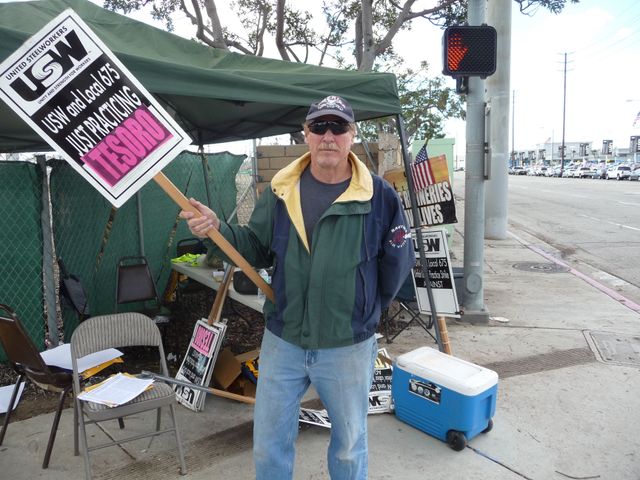Jeff Lusanne
A recently revealed report by the US Department of Transportation estimates that trains hauling ethanol or crude oil will derail an average of 10 times a year over the next two decades. The estimated damage of such derailments is $4 billion, and the chances are that some derailments would be near populated areas and cause fatalities. Both ethanol and certain varieties of domestic crude oil have proven to be highly volatile in derailments, causing explosions, fires and leaks.
The study was completed last July, in response to both accidents and steadily rising traffic. Railroads have always carried hazardous fuels and chemicals, but many shipments are “loose car” traffic to and from specific industries, and travel mixed with other non-hazardous freight. In 2005 and 2007, Congress passed legislation calling for the increased use of biofuels, which increased the amount of ethanol in gasoline.
This created a boom in ethanol production, and the creation of “unit trains” of ethanol, headed from big processing plants largely in the Midwest to refineries where the ethanol was blended with gas. Then, in 2011, a boom began to take off in crude oil produced in the Bakken region of North Dakota and Montana. Pipelines were not available to carry the capacity, nor would it be feasible to build them to the various locations of production and refining, so the traffic went to rail.
Since 2006, there have been at least 33 ethanol train accidents and 21 oil train accidents involving a fire, derailment or a significant fuel spill in the US and Canada. There have also been many other freight train derailments, but when a unit train of oil or ethanol derails, the entire train is a hazardous risk.
Yet the unit trains of oil and ethanol are very profitable. They don't have to be switched en route, which would require time and labor, and they travel very long distances—1,000 to 2,000 miles, from regions in the Midwest and Canada to refineries and terminals mostly on the East Coast. Long-distance unit-train shipments have been sought out by railroads for decades, as they reap higher profits.
While the money comes in, the study anticipates 15 derailments in 2015, declining to about five a year by 2034. It estimates 207 total derailments, of which 10 would be “higher consequence events” causing extensive damage and potential fatalities.
Last week saw one of these events, as a train of crude oil operated by CSX derailed near Mount Carbon, West Virginia. Twenty-eight of the tank cars on the 109-car train derailed, and many caught fire, producing enormous fireballs and leaking oil onto the ground. The home of Morris Bounds was destroyed, and the 68-year-old man barely escaped by running out his door immediately prior to the impact of the derailment.
That accident only failed to cause more property damage and threat to the lives of the public and employees based on the luck of its location. At many other places immediately nearby, the route of the oil train passes through communities large and small along the industrious Kanawha River Valley.
The federal analysis notes that oil and ethanol travel through communities with an average population density of 283 people per square mile, and 16 million Americans live within a half-kilometer of a route carrying the traffic.
Federal regulators responded to the release of the study by saying that regulations for stronger tank cars and better braking need to be put in place. But the tank cars in the accident were a newer variety, CPC-1232, with certain features that are supposed to improve durability to prevent damage in the event of a derailment.
As the risks of carrying oil by rail become tragically clear, railroads reaping money off the oil trains are also seeking to reduce crew size on trains to just one person. While trains currently have an engineer and conductor, railroads want to merge that into one position. This decision stems from a drive to reduce labor costs, not as a means of improving safety or operations.
While the engineer operates the train, the conductor reads signals that direct traffic, communicates with the dispatcher of rail traffic, manages paperwork about the train’s cargo, including information on hazardous materials. The conductor also handles all work on the ground, which includes throwing switches, switching out freight cars and fixing mechanical problems. This is dirty, dangerous work and it is done year round, night or day, in all weather.
The rationale railroads provide for eliminating conductors is the upcoming federal mandate for railroads to implement a new technology called Positive Train Control (PTC). It will provide constant enforcement of speed restrictions and protection from collisions. Once implemented, trains would receive continually updated information about its authority for movement at a given speed in a given area, and equipment in the locomotive would enforce these restrictions.
That would not prevent all accidents, however, but only those associated with certain mistakes by a crew or faulty equipment. Implementation is still in progress, while the danger of oil train derailments becomes clearer. In response, the Federal Railroad Administration in January proposed a rule that would make two-man crews mandatory. The Obama administration has not signed off on the rule, while railroads are lobbying to prevent it.
The railroads are not the only organization pushing for one-person crews: unions want in on the spoils as well. Last fall, conductors at BNSF Railway were presented with a contract by their own union, the International Association of Sheet Metal, Air, Rail & Transportation Workers (SMART), that proposed the elimination of an in-cab conductor. It would have created a position of “master conductor,” a roaming, on-the-ground conductor.
Conductors at BNSF, including in the territories carrying much of the Bakken oil from the wells to its next handler, voted down the contract, recognizing it as a betrayal even though incentives were offered. The SMART union was angling against the Brotherhood of Locomotive Engineers and Trainmen (BLET), which represents engineers. SMART, figuring on one-man operation, rather than opposing it wanted the concessions contract to include certain perks that would ensure the BLET would take the hit when one-man operations were introduced.
This continues a long tradition of bitter conflict between the union bureaucrats, even as the craft members work side by side every day.
The supposed concern of railroads for “safety” is belied by their treatment of operating employees. Both engineers and conductors effectively work on-call, with no set schedule. The railroads utilize 21st century technology, like remotely controlled engines, but employ 19th century methods in planning and scheduling crews. Employees are expected to answer the phone at any hour and report to work within two hours. They will then operate up to a 12-hour shift, which only includes the time that they operate the train, not the time it takes to reach the train from a crew base. Sometimes, crews will even “die” on the train—exceed the 12 hours—and have to sit, unpaid, until their taxi arrives.
On top of that, workers are permitted and often made to work six shifts in a row, and only then are given 48 hours rest. But those shifts can be at varying times, day and night, making solid rest potentially impossible.
Railroad operating crews are also expected to work weekends and holidays, and have little ability to get a substantial amount of time off. For example, at CSX, where the most recent oil train derailment occurred, the attendance policy assigns points for missing a call. The first attendance warning comes at 20 points. A missed call with no excuse is 10 points, a missed call for sickness is 4 points, and a missed call for sickness with a doctor’s note is 3 points.


